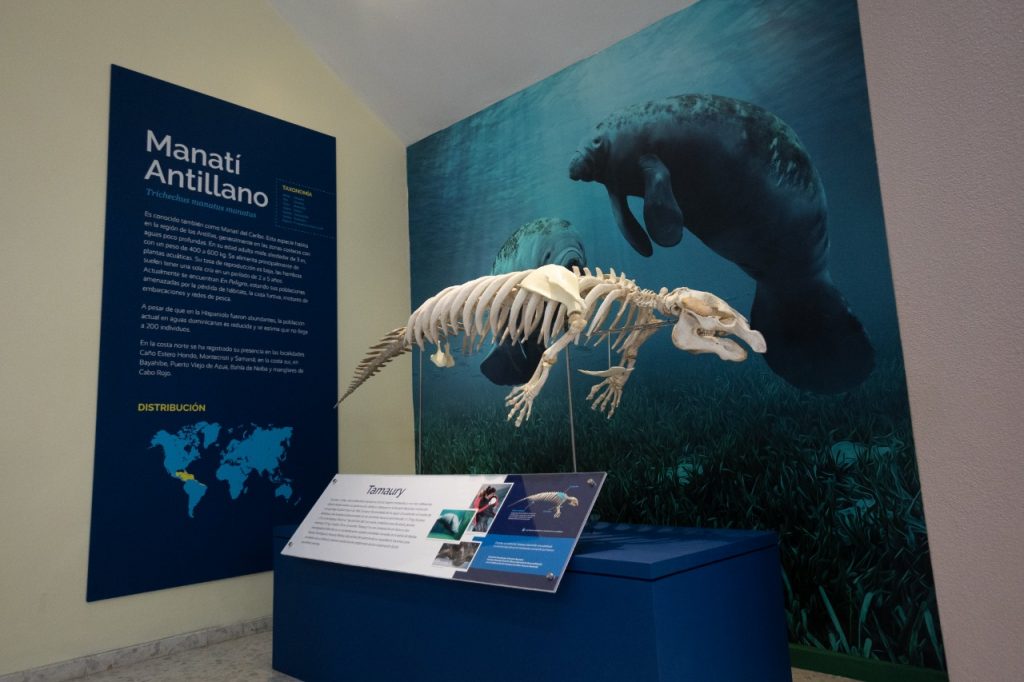
The National Museum of Natural History “Prof. Eugenio de Jesús Marcano” (MNHN) premiered this past weekend the exhibition of the skeleton of the manatee Tamaury, at the Hall of Marine Giants in the capital city museum that is located in Plaza de la Cultura.
The exhibit tells the story of the manatee who was rescued in 1995 from the waters surrounding the dock of Barahona where he appeared to be disoriented. In the habitat built for him at the National Aquarium, he grew from 31.75 kg and 70 cm in length to weigh 210 kg and measure 2.56 cm long. He lived 12 years and died of health complications in 2007.
The manatee was named “Tamaury” in honor of two researchers who died in a plane crash while studying manatees in Neyba Bay: Tammy Domínguez and Amaury Villalba. He was a Caribbean Manatee (Trichechus manatus).
“Tamaury made us reflect on biodiversity and its conservation. This solemn exhibition of his skeleton is to keep his story alive and reiterate our strong commitment to the conservation of marine mammals,” commented Celeste Mir, general director of the Natural History Museum.
Tamaury was so popular he was named the mascot of the 2003 Pan American Sports Games that were held in Santo Domingo.
The Museum is open to the public on Saturdays and Sundays from 9am to 3pm. Box office closes at 2p.m. The admission fee is RD$50 adults and RD$25 children.
Manatees inhabit the Antilles region, generally in coastal areas with shallow waters. In adulthood, they can measure about 3 m, weighing 400 to 600 kg. They feed mainly on aquatic plants. Females usually have only one offspring in a period of two to five years. The species is currently endangered, with their populations threatened by habitat loss, poaching, boat motors and fishing nets.
The current population in Dominican waters is small and is estimated to be less than 200 individuals.
On the north coast, manatees live in the Caño Estero Hondo in Montecristi and Samaná; on the south coast, in Bayahibe; on the southwest coast, in Puerto Viejo in Azua, the Neiba Bay in Barahona and in the mangroves of Cabo Rojo in Pedernales.
Read more in Spanish:
El Caribe
10 March 2021

